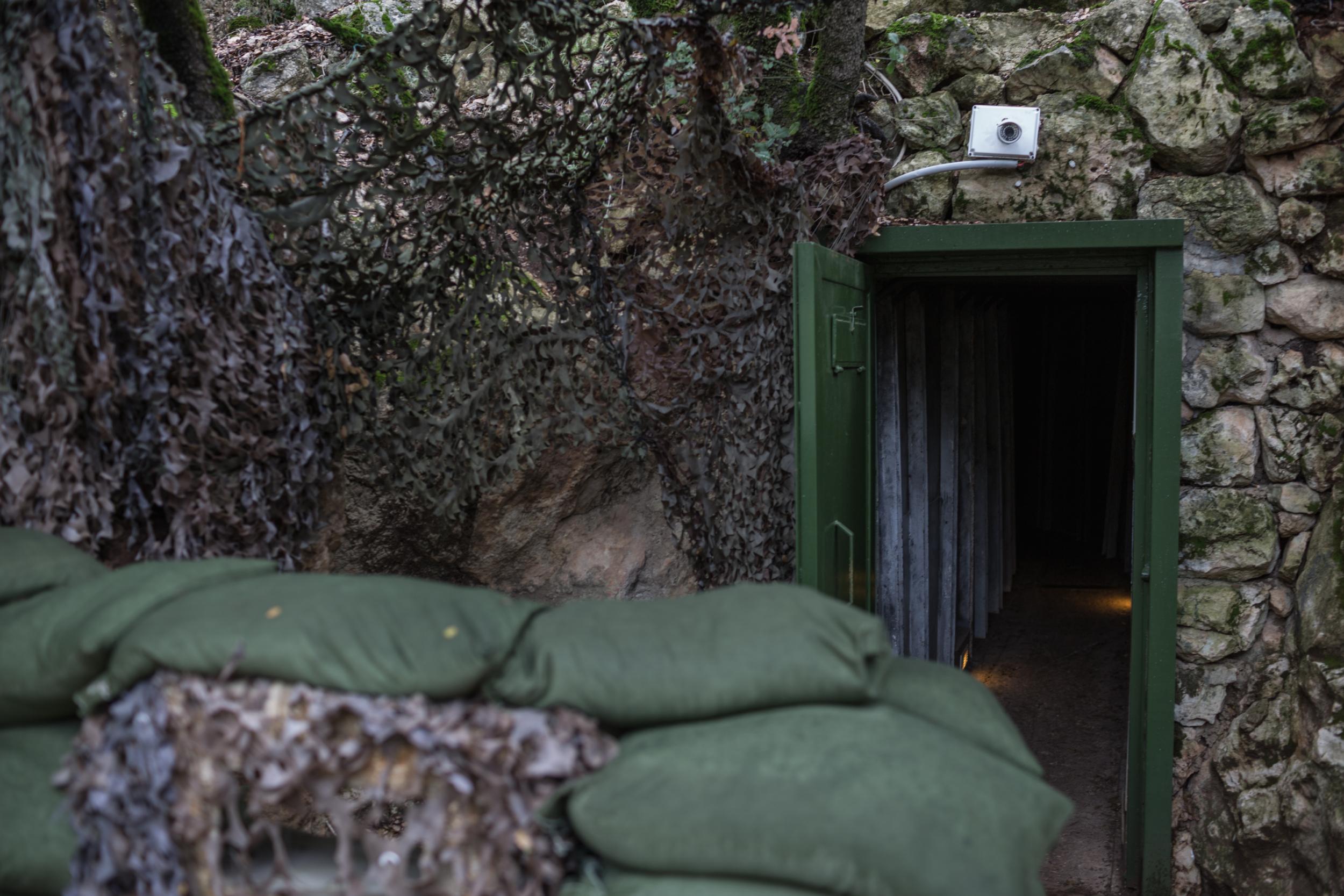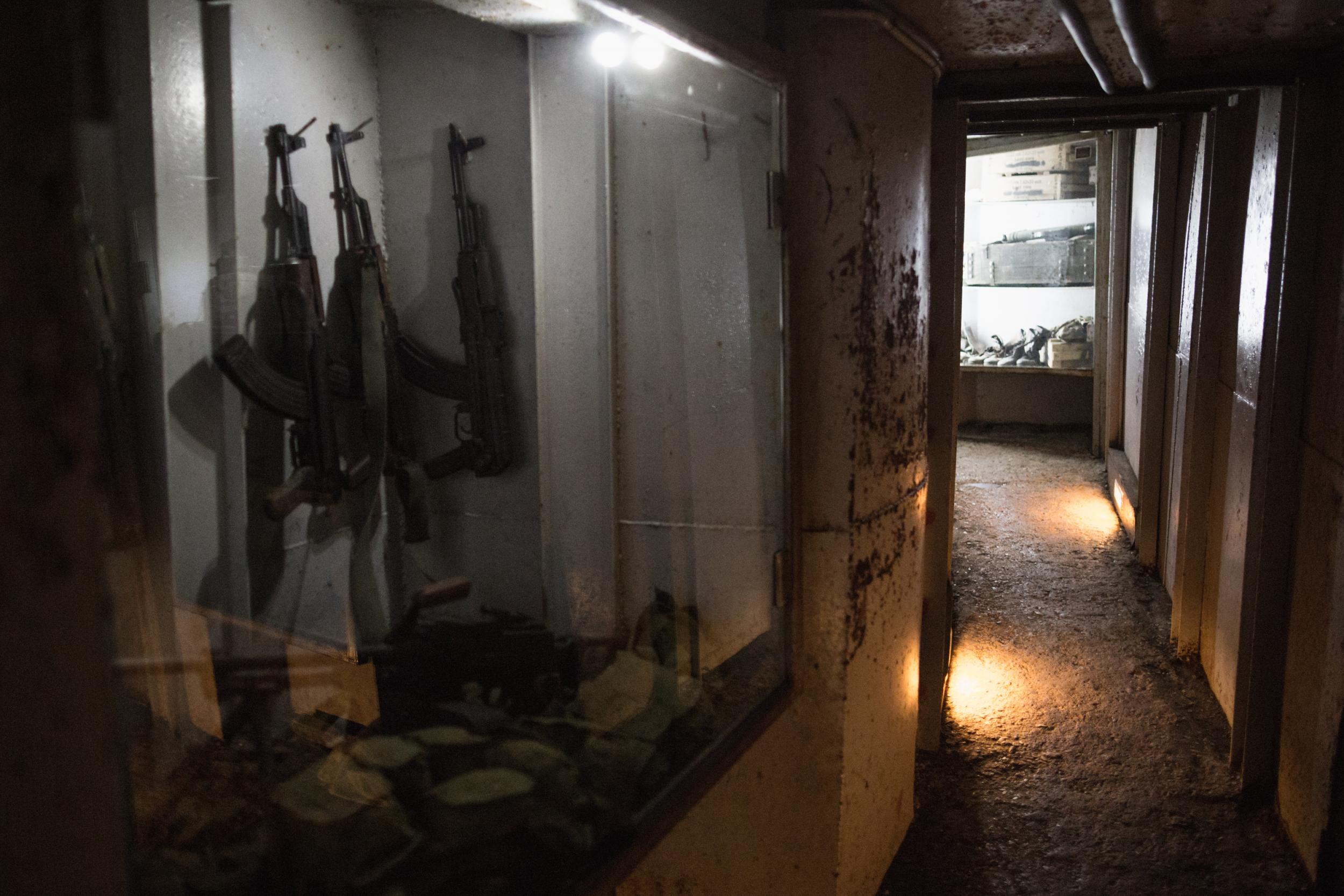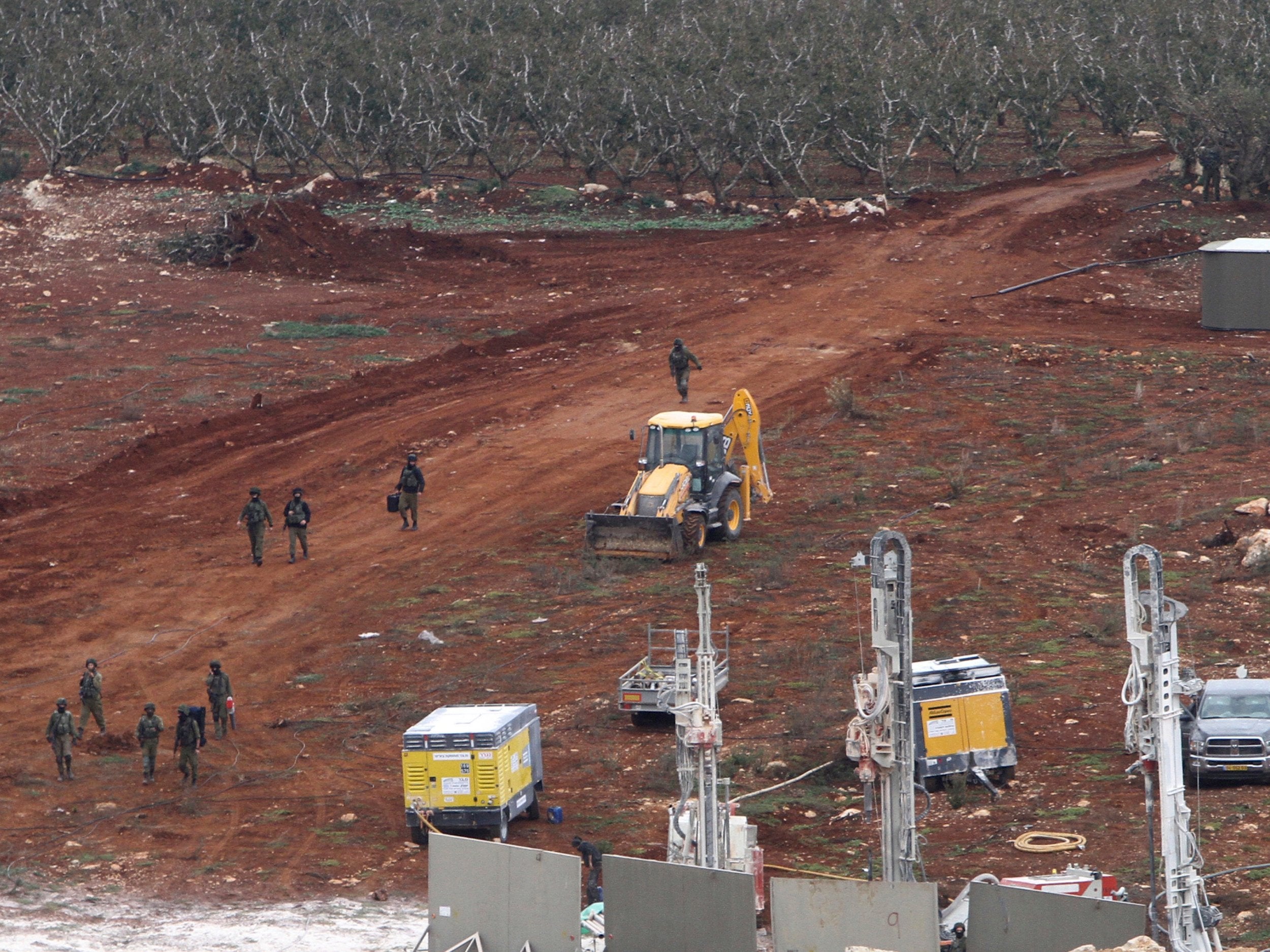Inside the Hezbollah tunnel that Israel never found
Discovery of tunnels dug by Hezbollah from Lebanon into Israel has raised tensions on border
Your support helps us to tell the story
From reproductive rights to climate change to Big Tech, The Independent is on the ground when the story is developing. Whether it's investigating the financials of Elon Musk's pro-Trump PAC or producing our latest documentary, 'The A Word', which shines a light on the American women fighting for reproductive rights, we know how important it is to parse out the facts from the messaging.
At such a critical moment in US history, we need reporters on the ground. Your donation allows us to keep sending journalists to speak to both sides of the story.
The Independent is trusted by Americans across the entire political spectrum. And unlike many other quality news outlets, we choose not to lock Americans out of our reporting and analysis with paywalls. We believe quality journalism should be available to everyone, paid for by those who can afford it.
Your support makes all the difference.The entrance to the tunnel is hidden by a canopy of oak trees that cover the mountainside. Inside, dim lamps lead the way down a narrow passageway into a warren of small rooms where the air is cool and damp. There is a kitchen, a bedroom with mattresses laid out, a prayer room and a command centre where orders are barked through a crackling radio.
This is what the inside of a Hezbollah tunnel looks like. The Israeli army – the militant group’s greatest foe – launched an operation this week to destroy tunnels much like this one, which it had discovered running underneath the border and into Israel.
But this tunnel in Mleeta, southern Lebanon, remained undiscovered in the nine years it was used by Hezbollah fighters to launch attacks against occupying Israeli troops. Today, it is part of a sprawling interactive museum complex that glorifies that fight.
“Israel didn’t know about this tunnel until we opened it up to the public in 2010,” says Ahmed Mansour, a spokesman for the museum. “It was kept hidden for all that time.”
At a time when Hezbollah’s subterranean activities are under renewed scrutiny, the museum at Mleeta serves as a reminder of the crucial role that tunnel warfare has played in the group’s past, and will likely play in its future.
Work began on the tunnel here at Mleeta in 1989, seven years into Israel’s 1982-2000 occupation of southern Lebanon. It took 1,000 men more than three years to dig, and when completed it became an important outpost for the group, allowing fighters to move undetected by drones and jets.
“There was a big difference in strength between the two sides,” says a guide at Mleeta who did not want to give his name. “The tunnels were simple but very effective.”

When Israel eventually withdrew from Lebanon, Hezbollah quickly began preparing for the next battle. The Iran-backed group built hundreds more complexes like this across the south.
“Between 2000 and 2006, Hezbollah constructed a very elaborate and comprehensive underground infrastructure in the south Lebanon border district, consisting of bunkers and tunnel networks,” says Nicholas Blanford, author of Warriors of God: Inside Hezbollah’s Thirty-Year Struggle Against Israel.
Those tunnels were used to great effect in the devastating 2006 war between Hezbollah and Israel, in which more than 1,000 Lebanese civilians and 44 Israelis were killed, according to Blanford. The conflict ended in a stalemate, which Hezbollah touted as a victory.
“They were able to launch rockets from underground facilities close to the border with Israel and to ambush Israeli troops that penetrated Lebanese territory,” he says.
That tunnel network could be utilised to even more deadly effect in the event of another war, a point that has become more relevant in recent months.

Over the past few years, Hezbollah and Israel have taken their rivalry to the battlegrounds of the Syrian civil war. But as that conflict is winding down, Lebanon is again becoming a focus for them both.
Israel has watched with concern as Hezbollah has emerged from the Syrian conflict significantly stronger. The group’s leader, Hassan Nasrallah, claims to have built up an arsenal of longer-range and more accurate missiles.
The cross-border tunnels add another dimension to Hezbollah’s threat. If utilised, the group would be able to send fighters to attack Israeli towns and villages.
The Israeli army began digging on its side of the border on Tuesday, and announced later in the day that it had destroyed one tunnel that began in a home near the border village of Kfar Kala and stretched some 40 metres into Israel.
The discovery has raised tensions along the border, which has been relatively quiet since 2006. Speaking on Tuesday, Israeli Prime Minister Benjamin Netanyahu called the tunnels “an unacceptable act of wanton aggression”.
“These cross-border terror tunnels were built by Hezbollah with a direct support and funding from Iran. They were built with one purpose in mind: to attack and murder innocent Israeli men, women, and children,” he said.
Here at Mleeta, the reaction was muted.
“The tunnels they are finding now have probably been there for years,” says the guide. “They are old.”
“I think they are more for psychological war than anything,” he adds.
Mansour, the museum spokesman, called the announcement of the Israeli operation “propaganda”, and linked its timing to a corruption scandal currently engulfing Netanyahu.
“Netanyahu is in a critical situation. He wants to create a distraction to take people’s minds off the issue,” he says.

But Netanyahu has found a sympathetic ear in Washington, with the administration of President Donald Trump. In October, Mr Trump signed new sanctions against Hezbollah, promising to “target, disrupt, and dismantle their operational and financing networks”.
He said of the group, which was behind a 1983 bombing of a US barracks in Beirut that killed 241 Marines, “No terrorist group other than al-Qaeda has more American blood on its hands.”
At a time when the group is already under financial strain for its involvement in the Syrian civil war, those sanctions may do more damage than the destruction of a few tunnels.
“The exposure of the tunnels for Hezbollah is not the end of the world,” says Blanford. “It’s quite possible they will have tunnels that the Israelis won’t know about, and won’t be able to detect.”

Join our commenting forum
Join thought-provoking conversations, follow other Independent readers and see their replies
Comments